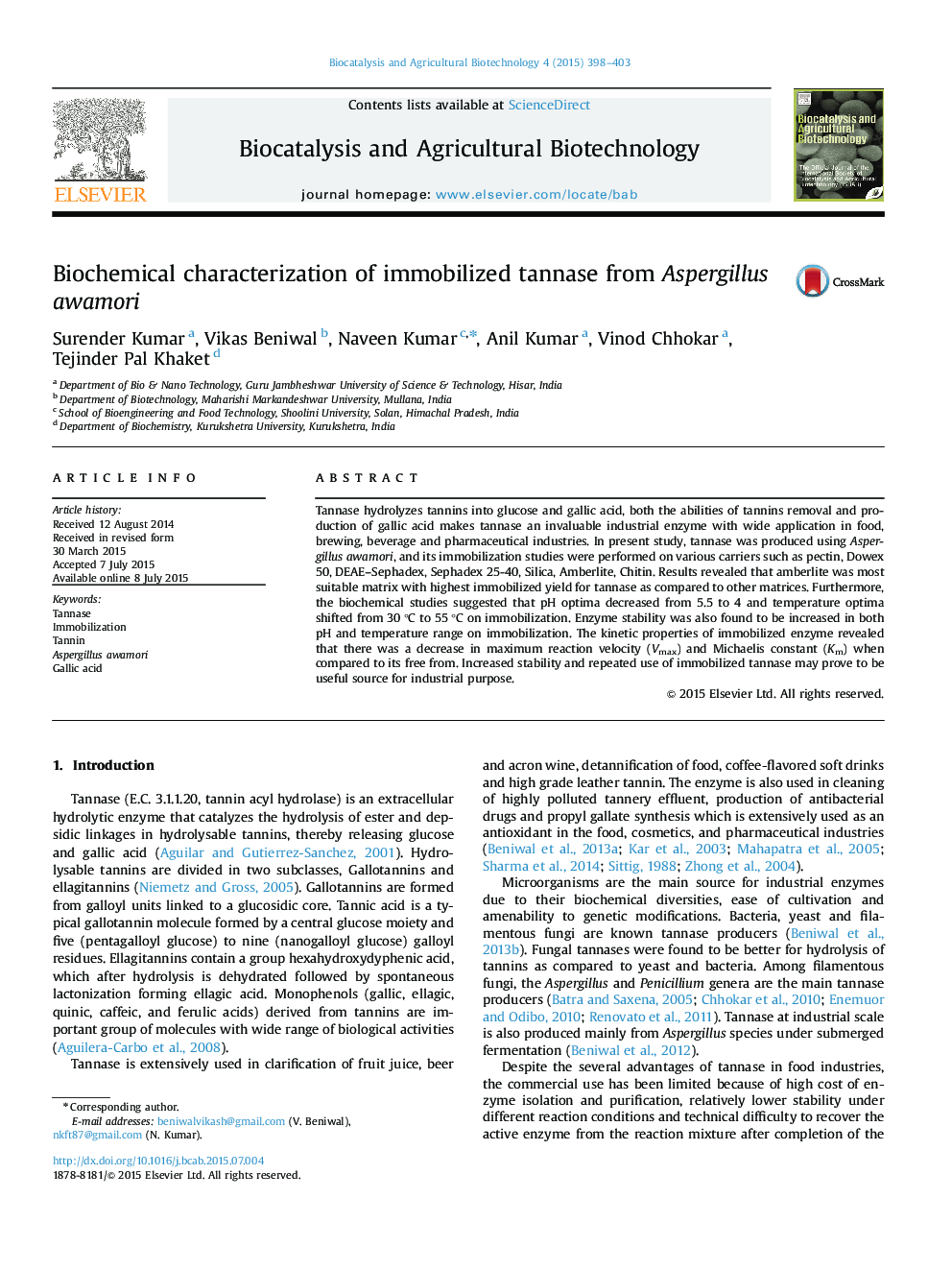| Article ID | Journal | Published Year | Pages | File Type |
|---|---|---|---|---|
| 2075467 | Biocatalysis and Agricultural Biotechnology | 2015 | 6 Pages |
Tannase hydrolyzes tannins into glucose and gallic acid, both the abilities of tannins removal and production of gallic acid makes tannase an invaluable industrial enzyme with wide application in food, brewing, beverage and pharmaceutical industries. In present study, tannase was produced using Aspergillus awamori, and its immobilization studies were performed on various carriers such as pectin, Dowex 50, DEAE–Sephadex, Sephadex 25-40, Silica, Amberlite, Chitin. Results revealed that amberlite was most suitable matrix with highest immobilized yield for tannase as compared to other matrices. Furthermore, the biochemical studies suggested that pH optima decreased from 5.5 to 4 and temperature optima shifted from 30 °C to 55 °C on immobilization. Enzyme stability was also found to be increased in both pH and temperature range on immobilization. The kinetic properties of immobilized enzyme revealed that there was a decrease in maximum reaction velocity (Vmax) and Michaelis constant (Km) when compared to its free from. Increased stability and repeated use of immobilized tannase may prove to be useful source for industrial purpose.
